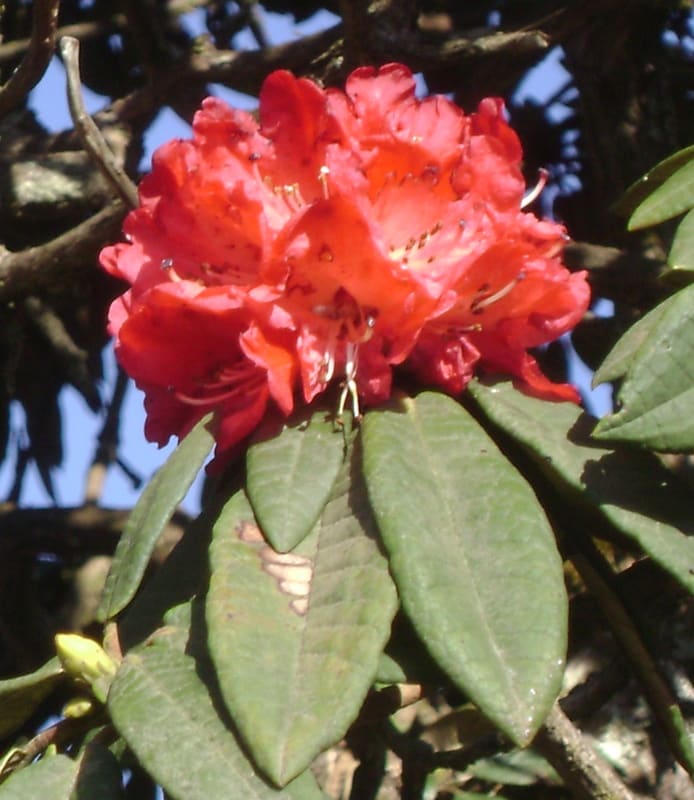Tree Rhododendron, Laligurans, Burans, Rhododendron
Rhododendron arboreum

🌿 Morphology
🌞 Growing conditions
🌍 Origin and family
🌾 Uses
Warning: Despite the care taken in writing this sheet, it is essential to cross-reference sources before using or consuming any plant. When in doubt, consult a qualified professional
Permaculture uses
Rhododendron arboreum offers limited direct permaculture applications. The flowers are edible, traditionally used to make juice, jam, and chutney, providing a source of vitamin C. However, consumption should be moderate due to potential toxicity in other plant parts. It can be used as an ornamental tree in woodland gardens, attracting pollinators like bees and birds. The leaves can be used as mulch, although they decompose slowly and may slightly acidify the soil. Its primary value lies in its ecological role, offering shelter and foraging habitat for wildlife. Some cultivars are bred for specific flower colors and sizes.
Permapeople description
Tree rhododendron native to Asia, known for its vibrant red flowers.
Botanical description
Rhododendron arboreum is a tree rhododendron native to Asia, typically growing to 10–20 meters tall, though occasionally reaching 30 meters. It boasts a trunk up to 2 meters in diameter. The bark is smooth and reddish-brown when young, becoming rough and furrowed with age. The leaves are oblong-lanceolate, 7–19 cm long and 3–7 cm broad, with a leathery texture and a dark green upper surface and silvery or fawn-colored underside. The flowers are produced in early spring in dense corymbs, each flower 5–6 cm in diameter, typically bright red, but varying from pink to white. The fruit is a dry capsule containing numerous small seeds. It is the national flower of Nepal.
Companion planting
Rhododendron arboreum thrives in acidic soil conditions. Therefore, it pairs well with other acid-loving plants like azaleas, camellias, and blueberries. It may compete with plants requiring neutral or alkaline soils. Avoid planting near shallow-rooted plants that may be easily shaded out by its dense canopy. It can offer shelter to smaller plants that prefer dappled shade.
Propagation methods
Propagation methods include seed sowing, cuttings, layering, and grafting. Seed propagation is slow and may not produce offspring true to the parent plant. Cuttings taken from semi-hardwood in late summer or early autumn can be rooted with the aid of rooting hormones. Layering involves bending a low-growing branch to the ground and burying a portion until roots develop. Grafting is often used to propagate desirable cultivars onto more vigorous rootstocks.
History and traditions
In Nepal and India, Rhododendron arboreum holds cultural and medicinal significance. Traditionally, the flowers are used in religious ceremonies and festivals. In traditional medicine, various parts of the plant are used to treat ailments such as fever, headache, and inflammation. The wood is sometimes used for fuel and small construction. The plant's vibrant red blooms have been celebrated in local folklore and art for generations.
Usage calendar
Flowering occurs primarily from late winter to early spring (February-April). Seed collection follows flowering. Propagation via cuttings is best done in late summer/early autumn (August-September). Planting of young plants is recommended in spring or autumn.
